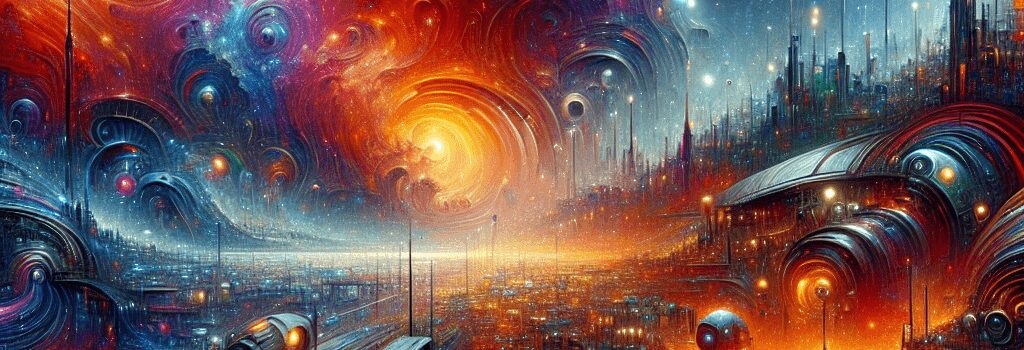Star Trek: Strange New Worlds S3 Teaser Unveils a Technically Rich Tapestry of Genres and High-Stakes Adventure

The upcoming third season of Star Trek: Strange New Worlds is promising a thrilling reboot of the franchise’s classic blend of romance, comedy, mystery, and even a dash of retro analog tech. The new one-minute teaser, released by Paramount+, gives a tantalizing glimpse into a universe where traditional storytelling meets cutting-edge technology.
A Glimpse Into the Multidimensional Adventures
The teaser highlights the hallmark diversity of the series. In a playful nod to earlier seasons, the episode revisits complex scenarios where technology and alien biology intersect. One highlight includes a reversal of events from season two: where a higher-dimensional race inadvertently reconfigured Spock’s half-human, half-Vulcan physiology, the new clip shows human crew members having to adopt Vulcan traits in order to complete a critical mission. This creative twist not only serves as a clever narrative device but also comments on the fluidity of identity in the face of interstellar challenges.
- Genetic and Technological Dilemmas: The crew’s temporary transformation into Vulcan-like beings forces them to grapple with challenges akin to rapid genetic reconfiguration—a concept that parallels current discussions in genetic algorithms and AI-based morphing techniques.
- Analog Meets Digital: The inclusion of analog tech elements in the storyline highlights a thematic contrast between old-world mechanics and modern digital computing, symbolizing the struggle between tradition and innovation in storytelling.
- New Antagonists and Cosmic Stakes: The introduction of a brand new villain adds another layer of complexity, promising high-stakes encounters that are enhanced by state-of-the-art visual effects and real-time digital rendering powered by cloud computing.
Technical Excellence in Production and Visual Effects
This season is notable not just for its rich storyline, but also for its technical prowess. Paramount+ is leveraging modern production techniques that include advanced visual effects driven by AI and machine learning. These tools allow intricate space battle sequences to be rendered with unprecedented realism, utilizing cloud-based GPU farms to process complex simulations in real time.
Visual effects teams are now integrating neural network-based algorithms to smooth over transitions between CGI and live-action, ensuring that even the most daunting space battles and alien encounters feel both futuristic and tangible. This blend of analog thematic elements with digital enhancements gives Star Trek: Strange New Worlds a unique aesthetic that honors both the past and future of sci-fi storytelling.
Character Arcs, Legacy, and New Directions
Season three promises to deepen the personal and professional arcs of its beloved characters. A notable addition is Cillian O’Sullivan as Dr. Roger Korby—a legacy character originally portrayed by Michael Strong. Dr. Korby is an established archaeologist in the field of medical archaeology, a role that ties together elements of historical mystery and cutting-edge science.
The evolving relationship between Nurse Christine Chapel (Jess Bush) and Spock (Ethan Peck) receives further intrigue, as external pressures and internal conflicts bring their union under the microscope. With guest stars like Rhys Darby and Patton Oswalt set to appear, the series blends humor and drama, ensuring that viewers are treated to both cerebral and emotional storytelling.
Deeper Analysis: The Impact of Cloud Computing and AI in Sci-Fi Productions
The evolution of visual storytelling in shows like Star Trek: Strange New Worlds is intricately tied to advances in cloud computing and AI technologies. Experts in the film and VFX industries note several key areas where these innovations are making an impact:
- Advanced Rendering Pipelines: Cloud computing platforms are now routinely used to manage the heavy computational load needed for high-resolution CGI, enabling distributed rendering that dramatically reduces processing times for complex scenes.
- AI-Driven Visual Effects: Machine learning algorithms assist in color grading, object tracking, and even predictive scene reconstruction, which enhances the seamless integration of digital effects with live-action footage.
- Real-Time Collaboration: Modern production environments leverage cloud-based tools to synchronize work across global teams, thereby enhancing creative workflows and reducing turnaround times on post-production edits.
With these technologies, sci-fi productions are not only pushing the boundaries of narrative and visual fidelity but are also setting new standards for production efficiency and global collaboration.
Industry Reactions and Future Prospects
The reception from both industry insiders and longtime fans has been largely positive. Critics have praised the series for its ambitious narrative structure and its innovative use of new age technical tools. The integration of high-end technological solutions in production is seen as a harbinger for future media projects where story depth is matched by technical excellence.
As streaming platforms continue to invest in next-generation production techniques, Star Trek: Strange New Worlds is expected to set a precedent by seamlessly blending aesthetic nostalgia with modern digital artistry. This innovative approach is already sparking conversations about the future of television, where the interplay between AI, cloud computing, and traditional filmmaking may redefine how stories are told in space and beyond.
Conclusion
With its fresh narrative twists, character evolution, and a keen focus on technical innovation, the third season of Star Trek: Strange New Worlds is poised to captivate audiences. As the show gears up for its high-stakes return, fans and tech enthusiasts alike will undoubtedly watch with keen interest to see how advanced digital tools and creative storytelling combine to chart a new course in the sci-fi genre.